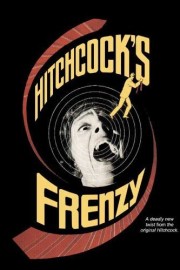Frenzy
“Frenzy” is the second-to-last film Alfred Hitchcock made in his long, brilliant career. It contains several elements familiar to the Master of Suspense’s fans– a man wrongly accused, a rhythmic score (by Ron Goodwin), and a killer whose particular pathology is unsettling, and not kind to women –but it also contains something new: nudity, and a gratuitous sexuality. This resulted in the film being rated R in the US, as well receiving an “X” in the director’s native England.
That’s a problematic notion. With many of Hitchcock’s best films, any sexuality and subversive violence was subtly just beneath the surface, and we definitely didn’t see the brutality in the violence the way “Frenzy” depicts it at times. Sure, the shower scene in “Psycho” was risque, but Hitch edited and shot the sequence in a way that kept the most graphic material off-screen; it was a masterstroke enhanced by the shrieking score by Bernard Herrmann. In depicting the rape at the center of “Frenzy,” Hitchcock is rather explicit, although not to the point of pornography. There’s no mistaking what’s happening, though.
Why would Hitchcock suddenly feel the need to show such a thing in this manner? True, the rigid censorship in movies had gone by the wasteside by the late ’60s, but did Hitchcock really feel the need to take advantage of the new possibilities of what could be shown on-screen? That was one of the great mysteries as I watched “Frenzy,” but as the film progressed, any sense of disillusionment and disappointment in the Master’s choices was replaced by my typical admiration for Hitchcock’s instincts as a storyteller and craftsman of the highest order.
The film is based on a novel by Arthur La Bern about a series of murders in modern-day London (well, modern day for 1972). They are called the “Necktie Murders” because each of the victims have been strangled with a necktie; they’ve also been raped. At the time of strangulations begin to occur, a London man named Richard Blaney (Jon Finch) gets into a run of bad luck: he’s fired from his job at the local pub, and he has nowhere else to go but a homeless shelter. He also has to go to his ex-wife for a loan, but naturally, when exes get together, they get into an argument, which doesn’t bode well when she ends up dead at the hands of the killer who, we find out, is actually Blaney’s friend, Bob Rusk (Barry Foster). Well, I’m not sure if you can call Rusk a friend as he murders Blaney’s co-worker and girlfriend (Anna Massey), and then frames Blaney, leading him into prison. But the police inspector on the case (Alex McCowen) is not quite sure about Blaney’s guilt, and while he deals with his wife’s attempts a cooking (a subplot that illicits several laughs, but seems somewhat out of place in the film as a whole), finds himself less and less certain as the evidence begins to point in Rusk’s direction.
To try and compare this film to Hitchcock’s greatest works would be a disservice; I mean really, a director can’t make a “Vertigo” or “Psycho” or “Rear Window” every time, can he? But “Frenzy” definitely belongs in the conversation with lower-tier Hitchcock delights such as “Dial M for Murder,” “To Catch a Thief,” and his ’50s remake of “The Man Who Knew Too Much.” It lacks the depth and purpose of the filmmaker’s best films, but it’s clear that, at the end of his career, Hitchcock still knew how to tell a good, old-fashioned murder mystery yarn (which he certainly has, courtesy of Anthony Shaffer’s screenplay), even if he did choose to push the boundaries of what could be (or even should be) shown on the big screen.










